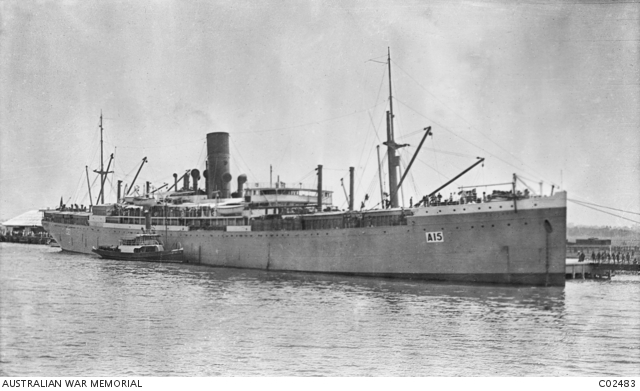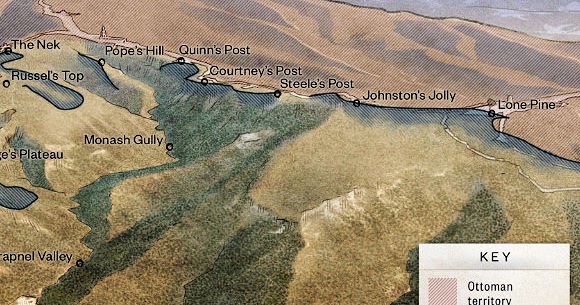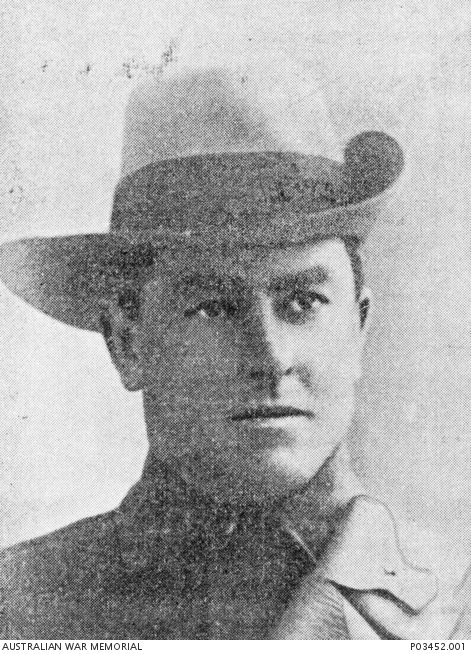Gordon Holmes Robertson was a member of a family that made an extraordinary commitment to the national cause in the Great War. His older brother was James Campbell Robertson who commanded the 9th Battalion at Gallipoli and in 1918 became Brigadier-General commanding 6th Brigade. His older sister was Mrs Isabella Wonderley whose husband died in early 1914 and whose son Charles Wonderley was killed in France in 1918 (see Wonderley C.R.). She became one of the central figures in the committee of women in the campaign to build the Mothers’ Memorial.
Gordon gave his address as c/- Isabella Wonderley, of Taylor Street, Toowoomba. He was almost 5’7” tall and weighed 147 pounds; he had a dark complexion, brown eyes and dark hair, and was a Presbyterian. He was educated at Toowoomba Grammar School and was among the first enlistments in Toowoomba, the city of his birth, on 19 August 1914. He enlisted just two weeks after the declaration of war, stating that he was single and a grazier, aged 29. He arrived at Enoggera as the 2nd Light Horse was being mustered, the first light horse unit to be raised in Queensland. As an “original” he sailed with the unit after just five weeks preparation, leaving Brisbane aboard A15 Star of England on 24 September.
After disembarkation in Egypt the 2nd LHR was in solid training from Christmas 1914 until May 1915. With the infantry pinned down in costly trench warfare at Gallipoli the decision was made to deploy the light horse to the Peninsula as infantry reinforcements. The men of the 2nd LHR landed, without horses, on 12 May. They moved up to the front-line within hours. One of the first casualties was Gordon Robertson. He suffered a “GSW, abdomen” perhaps less than an hour after reaching the front. The regiment’s diary records the stark fact “one man wounded” for that first day. Gordon was taken down to the beach and evacuated to the hospital ship Gascon, where he died, officially at 7.30pm on 13 May. He was buried at sea, about “3 miles off Gaba Tepe (Anzac Cove)” after a short service read by the chaplain of HMS London. He was almost certainly the first combat casualty of the 2nd LHR. The regiment would suffer 203 men killed in the war.
Notes from The Australian Light Horse Association webpage on the 2nd Lighthorse:
“Quinn’s Post was the farthest Anzac post along the eastern branch of Monash Valley taken and held by a handful of New Zealanders and Australians through the wild night of the landing. Opposing forces were each clinging to the edge of their own slope, forty yards apart, with a slight crest between them. The fact that Quinn,s lay lower than the ridges on either side made it impossible for the garrison to raise their heads to the level of the parapets either to observe or fire. On the other hand, the Turks above them, both to the left and right, were able to hold theirs up so that at this point they had established superiority of fire. The strain of such a precarious method of defence was increased by the bombs now regularly thrown at the post by the Turks. Men passing up Monash Valley seeing and hearing the bombs bursting up at Quinn’s used to glance at the place “as a man looks at a haunted house”.
“At noon on 13 May, 2nd Light Horse was charged with the defence of Quinn’s Post which became for a month the centre of almost all the fighting at Anzac. These Queenslanders, including many who were little more than boys, suffered heavily because of their inexperience in such a precarious position. The holding of Quinn’s was becoming a nightmare and it became vital to destroy old communication trenches from which the Turks were bomb-throwing.”
In Toowoomba, Gordon’s sister Isa Wonderley handled his affairs after his death on behalf of the family. In an extraordinary bungle the army prepared several death certificates for Gordon with three different dates of his demise. The problem took months to unravel. With a son and brother still at war, however, Isa remained active in her supportive role for the whole community of families caught up in the war. She wrote to the Red Cross in London seeking as much information of her loved ones as she could glean. She also elicited information from men returning from the theatres of war. She informed the army that her husband and parents were all deceased and that she had two sisters, one of whom was single and lived at her home in Taylor Street. She also expressed immense pride in the promotion of her surviving brother to higher command in the AIF.
Gordon Robertson’s name is recorded on the Lone Pine Memorial which displays the names of 4933 Australian ANZAC soldiers who died at Gallipoli and have no known grave. Gordon Robertson’s nephew Charles was killed at Dernancourt in 1918 and is also on the Mothers’ Memorial. His brother Brigadier-General James Robertson died in 1951 and is buried at Drayton-Toowoomba Cemetery (grave CE 1-6-002-0027).
Toowoomba Grammar School Archive Records state that he started at the school on 1st February 1899 and left on 20th December 1900. The School Magazine dated November 1915 states, ‘Gordon Robertson, brother of Lieutenant-Colonel Campbell Robertson, died of wounds received in battle. He entered the School in 1899, and was 28 years of age. After leaving school he was engaged in pastoral pursuits, and his fine manly bearing gained him general respect and many friends.’
External Links:
National Archives of Australia Military Records
National War Memorial Honour Roll
AWM4 AIF unit war diaries 10/2/4 2ND ALH May 1915

HMAT Star of England (A15), at Pinkenbar, Queensland, with the 2nd Australian Light Horse Regiment aboard. This vessel was part of a convoy carrying the first contingent to Egypt.

2nd LHR Landing at Gallipoli

Map of ANZAC trenches on Gallopoli

3D perspective of the main front line at Gallipoli

The Sphinx with Walkers Ridge, Russells Top and the Nek in the background, taken from Plugges Plateaux- Ann Hallam 2015

Robertson GH on panel at Lone Pine taken by Ann Hallam

2nd LHR August 1914 before departure




